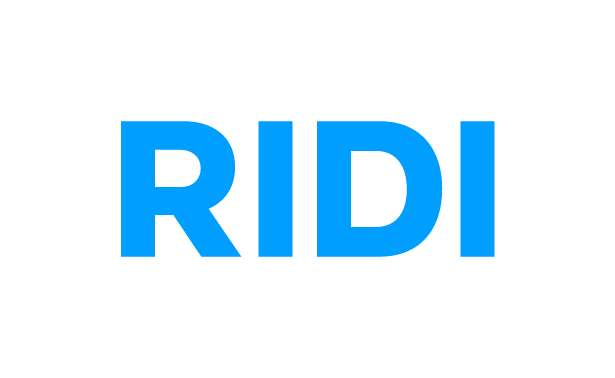Fox is the fourth largest media organization in the United States, with over 22,000 employees. Its FOX Sports division has become known as a leader in live sports consumption covering nearly a dozen sports and hundreds of sporting events worldwide, including the crown jewel of sports coverage: the 2018 FIFA World Cup™ in Russia. The network’s coverage of the international event enjoyed record-breaking ratings, with content delivering 2.6 billion minutes live streamed which helped rank the FOX Sports App as number 1 in the U.S during the tournament.
The team’s live event coverage involves real-time collaboration with everyone from producers to designers to on-air talent—few of whom are in the same location. And it all has to look seamless in front of an audience of millions.
In the past, individual producers and teams had their favorite workflow and messaging tools. But most of the editorial process was conducted over email, and wasn’t in real time. Teams couldn’t get immediate feedback on assets before broadcasting live or posting to social. Shared resources who worked with multiple programs or divisions might have to keep track of a dozen different apps on their phones and their computers, all competing for their attention.
“In addition to the loss in efficiency and the increase in licensing fees that came from having multiple communications platforms, it was easy for individual messages to slip through the cracks,” said Paul Cheesbrough, CTO at Fox. “There wasn’t a good process for distinguishing the important emails that someone needed to take action on versus the hundreds of other emails you were CC’d on as an FYI.”


Cheesbrough had a vision for improved collaboration throughout the organization and finding an easier way for different teams to communicate and share information. As the company launched their digital transformation initiative, they wanted to replace the ever-growing pool of productivity and communications applications with something that was easy to use, could be easily adopted, and rolled out across the organization.
“From on-site scouts to video editor freelancers to full-time operations managers at headquarters, we needed a way to easily enable teams to work together and quickly produce high-quality content. We found that with Slack.”
Complex on-site logistics and operations managed in Slack
Today, over 12,800 Fox employees and freelancers use Slack every day as part of their workflows. By using Slack channels, they’re able to keep content organized and under wraps and their data secure.
During the 2018 FIFA World Cup™, Slack was the network’s central collaboration hub connecting the on-site production and technical teams in Russia with the rest of the organization who were spread out across several cities in the U.S. With producers, video editors, copywriters, and social media strategists all gathered in one digital place, people were able to get help, give feedback, and coordinate content faster than ever before and with little distraction.
- In the
#worldcup-digitalSlack channel, on-site location scouts would snap photos and videos and post them in the channel for production teams at headquarters, who could quickly grab the files and post them to other channels for other teams to pick up. With this channel, teams were also better able to make requests for specific clips and information. - For seamless collaboration across the globe, the team held regular global stand-up meetings using the Zoom integration for Slack.
- Urgent questions from anyone on the team were asked in
#production-triage, a channel specifically set up for teams to triage emerging issues, and answered by whomever is online across the globe.

For major TV moments like these, the network had to bring on more than 200 freelancers. To get them onboarded and oriented around their goals as efficiently as possible, the team used the Slack integration with ServiceNow to be able to instantly receive and approve access requests from new team members.

And with the company’s message history retained in Slack channels, new freelancers were able to search for information they need and get up to speed with the work already being done, allowing them to spend more time on working rather than focus on training.
“Our video editors, social media managers, and producers are creating content by collaborating with each other in real time on Slack, which helps us fulfill our goals of breaking down internal silos while still giving each group a level of control and privacy when needed.”
Real-time content creation in Slack channels
The 35-person 2018 FIFA World Cup™ production team was spread across multiple sites in Russia as well as Los Angeles, New York City, and Charlotte—but through Slack they were able to stay on the same page and coordinate coverage as easily as if they were in the same location, which allowed them to make quick decisions around how to make the most of their real-time coverage.
- Throughout the tournament, the digital team in Russia and the team back in LA had to stay in constant communication in the
#world-cupSlack channel to discuss how to best cover matches for the fans. In real time through Slack, they could quickly coordinate which moments should be featured for highlights and tweets and which to send as push notifications across their mobile properties. - As soon as a team scored a game-winning goal, the
#highlightschannel would spring to life where producers uploaded their video files of clips to the channel for the production team to grab. - The assigned video editor would clip the requested highlight and post it to
#productionwhere stakeholders would offer feedback and approve it, without having to leave the channel. - While that was happening, the social media team would start drafting related social media copy and share it in
#digitalcontent. - Once items were approved, the final content was shared in each channel and marked as final, ready to be pushed out through more of the network’s digital and broadcast properties.
- In the
#worldcup-performancechannel, the team tracked as many as 130 pieces of content produced daily, and used integrations with their various apps and services, including a simple custom integration with CrowdTangle, to track how each piece of content was performing. This helped them immediately identify under- and over-performing content so they could instantly optimize their strategies.

Working in channels allowed various teams to keep conversations and work focused, while simultaneously giving them access to people and partners across the business. This process for producing content in real time through Slack was so efficient, teams followed this same workflow when additional versions of game highlights needed to be pushed to web streams, the website, and mobile apps as well as in ongoing live coverage.
“The people who hadn’t moved their workflow to Slack had an email chain with 1,300 reply-alls,” said John Herbert, CIO of Fox. “How many of those emails weren’t relevant for each of those 30 people, and how much time did they spend reading them to determine they didn’t need to take action?”
Centralized communications creates a faster, more agile workflow at Fox
As Fox continues to cover sporting events and keep up with the increasingly fast pace of content production required, while also maintaining a high quality of fan engagement through social media, they see global adoption of Slack as a key advantage.
Slack has streamlined and sped up complicated workflows while giving leadership increased visibility and easy access to the information they need to make timely business decisions. Working together in Slack has been so effective that now, on a day-to-day basis, almost all collaboration among different FOX Sports divisions takes place in Slack channels.
“Given the success we saw with the FIFA World Cup™ coverage in particular, we’ve proven internally how Slack can transform a live sporting event and turn it into a shared global moment across the business,” said Herbert. “I want to see Slack being used wall-to-wall by the end of 2018 so we can continue to deliver the best experience to our viewers in this new digital world.”
No more wading through thousands of emails or taking days to approve requests. With Slack, Fox can make decisions, and share their content at the speed of social. “Slack simply makes work easier,” said Herbert.















